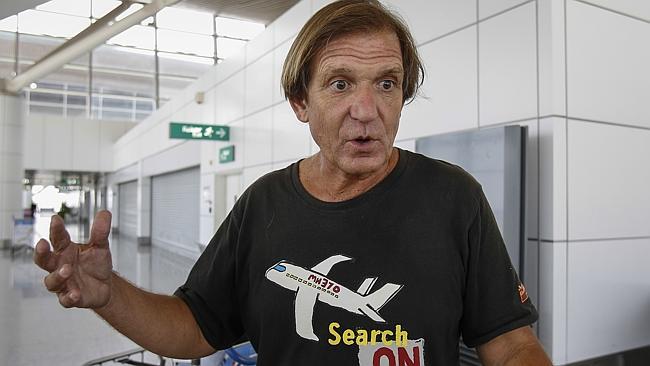Seattle lawyer’s one-man hunt for Malaysia Airlines flight 370
Blaine Gibson travelled across Asia and Africa because of a hunch that those searching for MH370 were missing something.

Over the course of a year, Blaine Gibson travelled across Asia and Africa with the nagging hunch that investigations into the disappearance of Malaysia Airlines Flight 370 were missing something.
After searching in Myanmar, he travelled to the Maldives, where he met a man who claimed to have seen a plane with markings similar to those of the missing Malaysia Airlines jet pass low over his island.
Then, on February 27, Mr Gibson found a metre-long, triangular-shaped piece of material with a honeycomb core on an island off Mozambique. The words “No Step” were clearly printed on one side, triggering speculation it was part of the horizontal stabiliser from the tail of the aircraft.
The 58-year-old lawyer from Seattle said his goal was to find some physical evidence for investigators trying to find out what happened to Flight 370 and its 239 passengers and crew. Until now, they have largely relied on data sent from the plane to a satellite operated by Inmarsat that placed it somewhere in the southern Indian Ocean.
Experts from Australia, Malaysia, the US and the plane’s manufacturer Boeing deemed images of the debris sent by Mr Gibson compelling enough to arrange for tests in Canberra.
If confirmed to be from Flight 370, it would be only the second piece of debris recovered after part of a wing was found washed up on the Indian Ocean island of Reunion last year. Investigators note that recovery of debris in Reunion and, if confirmed, Mozambique, is consistent with the 85,000sq km search area in the Indian Ocean where they believe the plane ran out of fuel after veering off course on a flight from Kuala Lumpur to Beijing on March 8, 2014. Ocean currents would propel debris towards Africa, they said.
Mr Gibson predicts more people will join the search for alternative clues to what happened to flight 370. “I think investigators in Australia and the people at Inmarsat have been doing their very best,” he said. “But I believe it is possible that a lot of evidence was considered and dismissed or not considered at all because of the reliance on the Inmarsat data. So I thought someone needed to be out there looking ... and I took it upon myself to do that.”
He would continue looking for debris. but “I’m not sure where I will go next. Madagascar could possibly be a good place to look.”
The Wall Street Journal



To join the conversation, please log in. Don't have an account? Register
Join the conversation, you are commenting as Logout